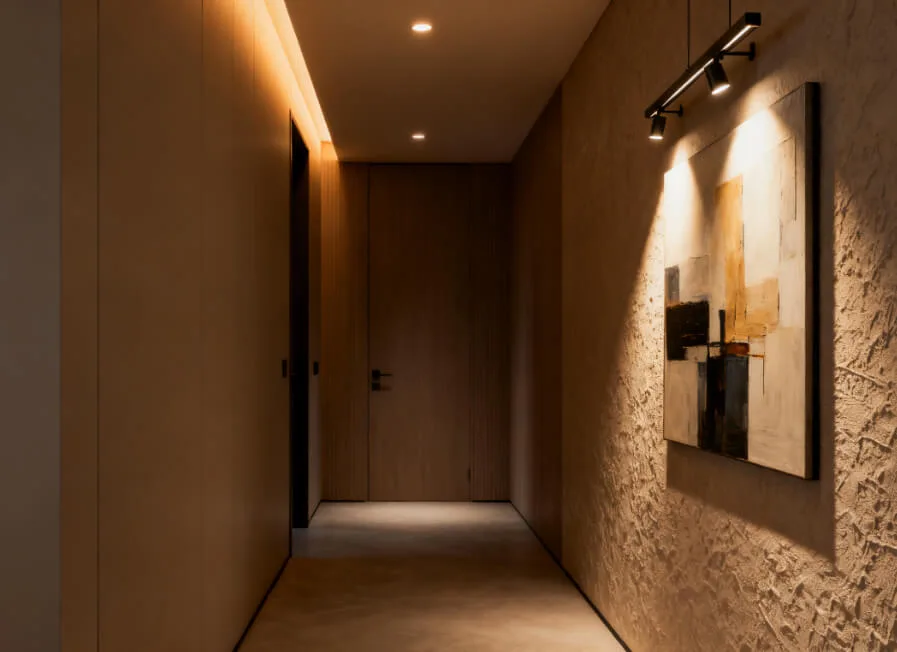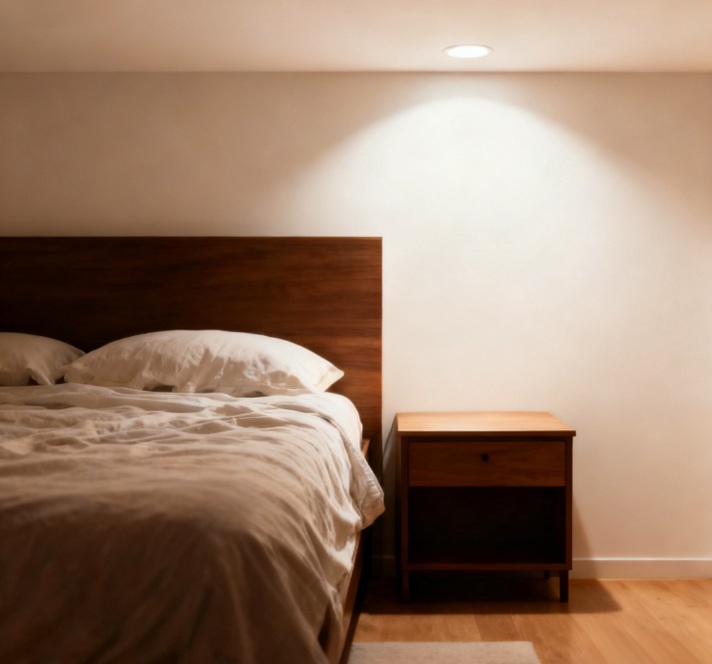Have you ever felt confused by terms like “LED,” “Full-Spectrum Eye Protection,” and “Main-Light-Free Design” when buying lights? Does salesperson jargon leave you bewildered, leading you to choose based on gut feeling, only to end up with lights that are too dim or too harsh?
Don’t worry, this Beginner-Friendly Ultimate Guide to Choosing Lights is for you. We’ll break down all the popular lighting terminology in simple, easy-to-understand language. You’ll not only grasp the concepts but become skilled at selecting the right lights to create a comfortable and sophisticated lighting environment for your home and family.
Chapter 1: What are LED Lights? Why Are They the Absolute Mainstream?
Simply put, LED (Light Emitting Diode) is a semiconductor lighting technology. Think of it as a highly efficient, long-lasting “electronic firefly.”
1. Why did LED lights replace traditional bulbs?
-
Super Energy Efficiency (Core Advantage): Saves over 80% more energy than old incandescent bulbs. An LED lamp requires much lower wattage for the same brightness, saving you money on electricity bills in the long run.
-
Exceptionally Long Lifespan: A quality LED lamp can have a theoretical lifespan of over 25,000 hours. Used 5 hours daily, it could last more than a decade.
-
Eco-Friendly & Safe: Contains no harmful materials like mercury and generates far less heat than incandescent bulbs, making them safer.
2. [Key Pitfall] Why is there such a big difference in price and lifespan between LED lights?
Many people complain that “the LED light I bought broke in a year.” The problem usually isn’t the LED chip itself, but lies in these two key metrics:
-
Color Rendering Index (CRI):
-
What is it? Measures the light’s ability to reveal an object’s true colors, denoted as Ra. Sunlight is the benchmark at 100.
-
How to choose? The higher the value, the more true-to-life colors appear. For home quality, strongly choose LED lights with Ra ≥ 90, especially in areas like the kitchen, study, or bathroom mirror.
-
-
Driver & Heat Dissipation:
-
The LED chips themselves rarely fail, but their “heart” – the driver that powers them – is the main reason cheap lights fail early.
-
Shopping Tip: Choose reputable brands that offer warranties of 3 years or more. Their drivers and heat dissipation designs are typically more reliable.
-
Chapter 2: Are Eye-Protection Lamps a Scam? What Truly Makes a Lamp “Eye-Protecting”?
“Eye-protection lamps” are not just a marketing gimmick; they are a category of desk lamps for reading and writing that meet strict national standards. A genuine eye-protection lamp minimizes visual fatigue and helps protect eyesight.
When buying an eye-protection lamp, insist on these four criteria:
-
Illuminance & Illuminance Uniformity (The Core):
-
Illuminance is whether the desktop is bright enough. Chinese standards classify this as Grade A and the higher Grade AA. For children, prioritize finding Grade AA.
-
Uniformity refers to how even the light is. A value closer to 1 is better, preventing eye strain caused by the pupil constantly adjusting between bright and dark spots on the desk.
-
-
Color Rendering Index (CRI):
-
True color is crucial for reading and writing. An eye-protection lamp must have an Ra value greater than 90, and greater than 95 is even better.
-
-
Color Temperature & Dimming:
-
Color Temperature describes the color of the light. For reading, neutral light around 4000K is most comfortable, promoting focus without being harsh.
-
It’s best to choose a lamp with adjustable color temperature to suit different needs (e.g., relaxation vs. concentration).
-
-
Glare & Blue Light:
-
Good eye-protection lamps use side-emitting technology or deep shades to avoid direct glare, achieving “light without seeing the source.”
-
Look for the RG0 (Exempt from Blue Light Risk) certification to eliminate blue light concerns entirely.
-
Chapter 3: Is Main-Light-Free Design = High-End? Demystifying This Popular Lighting Layout!
Main-light-free design, as the name suggests, abandons the traditional single large chandelier or ceiling lamp in the middle of the room. Instead, it uses a combination of various light fixtures to achieve zoned and accent lighting.
1. What are the benefits of main-light-free design?
-
Elevates Space Aesthetics: Creates layers and variation in lighting, significantly enhancing the style and ambiance of your home.
-
Eliminates Dark Corners: Through scientific layout, it ensures every corner of the space is evenly illuminated, avoiding dark areas.
-
Creates Illusion of Space: Without bulky main lights, the ceiling looks cleaner, and the room feels more spacious and open.
2. Meet the “Cast” of Main-Light-Free Design:
-
Downlights: Provide widespread, diffuse light like “floodlights,” used primarily for ambient/general lighting of an area.
-
Spotlights: Offer focused, directional light like “spotlights,” used for accent lighting, such as wall washing, highlighting artwork, or emphasizing decorations.
-
Magnetic Track Lights: Highly flexible; lights can be moved, added, or removed along the track. They are the soul of modern main-light-free design.
-
LED Strips: Hidden in coves, behind furniture, or under cabinets, they are the masters of “seeing the light, not the fixture,” responsible for creating ambiance and indirect lighting.
3. [Beginner Warning] Considerations for Main-Light-Free Design:
Main-light-free design isn’t just about installing many lights. It requires careful planning and wiring during the early electrical rough-in stage of renovation. It’s highly recommended to consult a professional lighting designer or experienced electrician. Otherwise, it’s easy to fail, resulting in “star-filled sky” light pollution or insufficient illumination.
Summary & Action Guide
You are no longer a novice in the world of lighting! Let’s do a final recap:
-
The foundational technology is LED. When buying, focus on High CRI (Ra≥90) and Long Warranty.
-
The functional choice is the Eye-Protection Lamp. For children, look for AA Grade Illuminance and RG0 Blue Light Free.
-
The overall design approach is Main-Light-Free. It elevates your home’s feel but requires professional planning upfront.
We hope this detailed guide helps clear the confusion and empowers you to easily create a bright, warm, healthy, and comfortable lighting environment. If you found it useful, please share it with friends who are renovating or also struggling with light selection!



